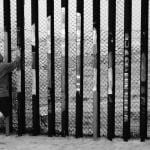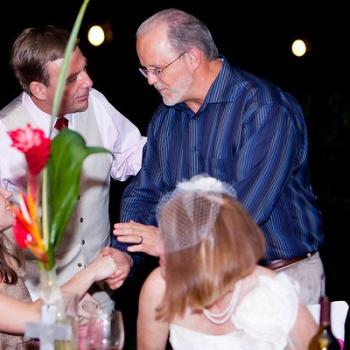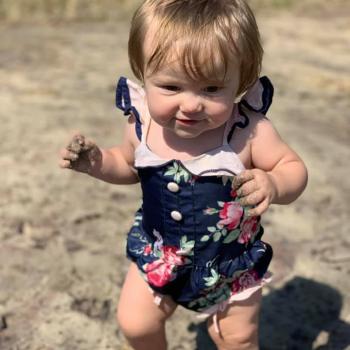
The following is a guest piece by Trista Ann Marie Eazell.
I do not remember a time where my body wasn’t screaming in pain.
At eleven years old I – a child who had never once complained of pain before – began crying because my body hurt so bad.
My mother took me to multiple doctors, but they didn’t believe me and told her I was making things up. That the pain in my body wasn’t real.
My mother refused to listen, and thousands of dollars were spent on me being poked, prodded, attempting every treatment we could get our hands-on.
Eventually, I was diagnosed with fibromyalgia, a disease of widespread chronic pain that has mystified the medical world for decades.
My parents are of the born-again persuasion of Christianity and many Christians who heard of my disease would speak words of “prophecy” that I would be “healed in the name of Jesus,” and at first I believed them.
I believed that if I had enough faith and enough people prayed, I would be free from the constant and unending pain.
But the healing never came.
Fibromyalgia is considered an incurable disease, only a few have recovered fully, and even then the reasons why are unknown.
Because of my fibromyalgia, I didn’t have the energy other kids my age did. I couldn’t play sports, I ate weird healthy food, and was constantly getting sick. I had friends, but I felt isolated.
At 22, I was diagnosed with another incurable disease: endometriosis, a disease that grows skin cells that shed throughout your body creating excruciating pain and leave scar tissue behind.
Through the painful battles my body had to fight daily, I also found myself being discriminated against in the workplace for not having as much energy as my coworkers, for not smiling as much, for having a hard time moving heavy things, and for needing to call in sick occasionally.
When I explain my illnesses to people I often get “well you don’t look sick!” or “you’re too young to be tired, have kids than talk to me.”
It is assumed because I am small and thin, I must be healthy and comfortable in my body.
The reality is, I am so small because of my illnesses, struggling with the wellness diet culture, and I am not comfortable in my body at all.
Living in a chronically ill and chronically painful body is like living in a house that is closing in around you and in need of constant repair.
I have experienced only a handful of pleasurable embodied experiences, most of the time I am just trying to distract myself from the pain.
I often feel that my struggles are invisible to the world around me, and when I do not live up to the standard expected of someone who visibly looks healthy, I am looked down upon. I have to go to four different doctors regularly and am on about 10 medications. I have been yelled at by roommates who didn’t understand why I wasn’t as active as them in cleaning the house or why I seemed so forgetful.
I and others with both invisible and visible illness/disability have learned to be tough and to deal with the fact that people will be insensitive and prejudice towards us, refuse to listen to us, and refuse to ask questions about disability.
I am a part of a lot of social justice conversations and consistently ableism has been the topic folks are least comfortable talking about, least willing to do the work to be empathetic to our plight and forget to list us among the marginalized groups.
When the Holocaust is discussed it’s never brought up that the first hundreds of thousands of victims were disabled and sick people.
When we learn about U.S. History we do not hear about Buck V. Bell where “imbeciles” (i.e. disabled and chronically ill folk) were forced to be sterilized, and how in many states those with visible diseases weren’t legally allowed to be seen in public.
This is an uncomfortable conversation to have because people still are not ready to face the fact that humans are naturally prone to fear what they do not understand.
Those with chronic illness and chronic pain often represent the fear most people have of facing their invisible emotional pain: it’s easier to dismiss those with invisible pain than to acknowledge that everyone has invisible demons. Those with visible disabilities often represent the fear people have of the “other”, it is easier to vilify people with visible disabilities than to do the hard work of understanding their needs, of making space for them and being patient enough to let their voices be heard.
In religion, people with disabilities and illnesses were often thought to be “unclean”, “sinful”, and even “demon-possessed”.
Often churches and other religions will look at disability and illness as something spiritual that needs to be fixed by God or a charity case to earn heavenly rewards from. The questions that those with disability and illness ask about God are hard. Is God all-powerful? Does God care about my pain? Is God there? And at these questions the church stares blankly at and then tries to meet with earnest but helpless anecdotes. The voices and questions of the disabled and ill are silenced in the spiritual places they look for answers in.
I cannot tell you what the remedy is, but I do not that all who are healthy and able-bodied do have ableism that needs to be worked through. Do research, listen to the voices of the disabled and ill, invite them to sit at the table beside you, ask them what they want and need, and be humble when someone points out ways you are being ableist.
Trista is a pastoral intern at New Abbey North Hollywood, a graduate student at Fuller Theological Seminary, a writer, a poet, and desires to help bring healing. For more of Trista, follow her on Instagram.
For more of Sheri Faye Rosendahl’s work, go to www.SheriFayeRosendahl.com, check out her book Not Your White Jesus, or follow her on Facebook, Twitter, or Instagram.












